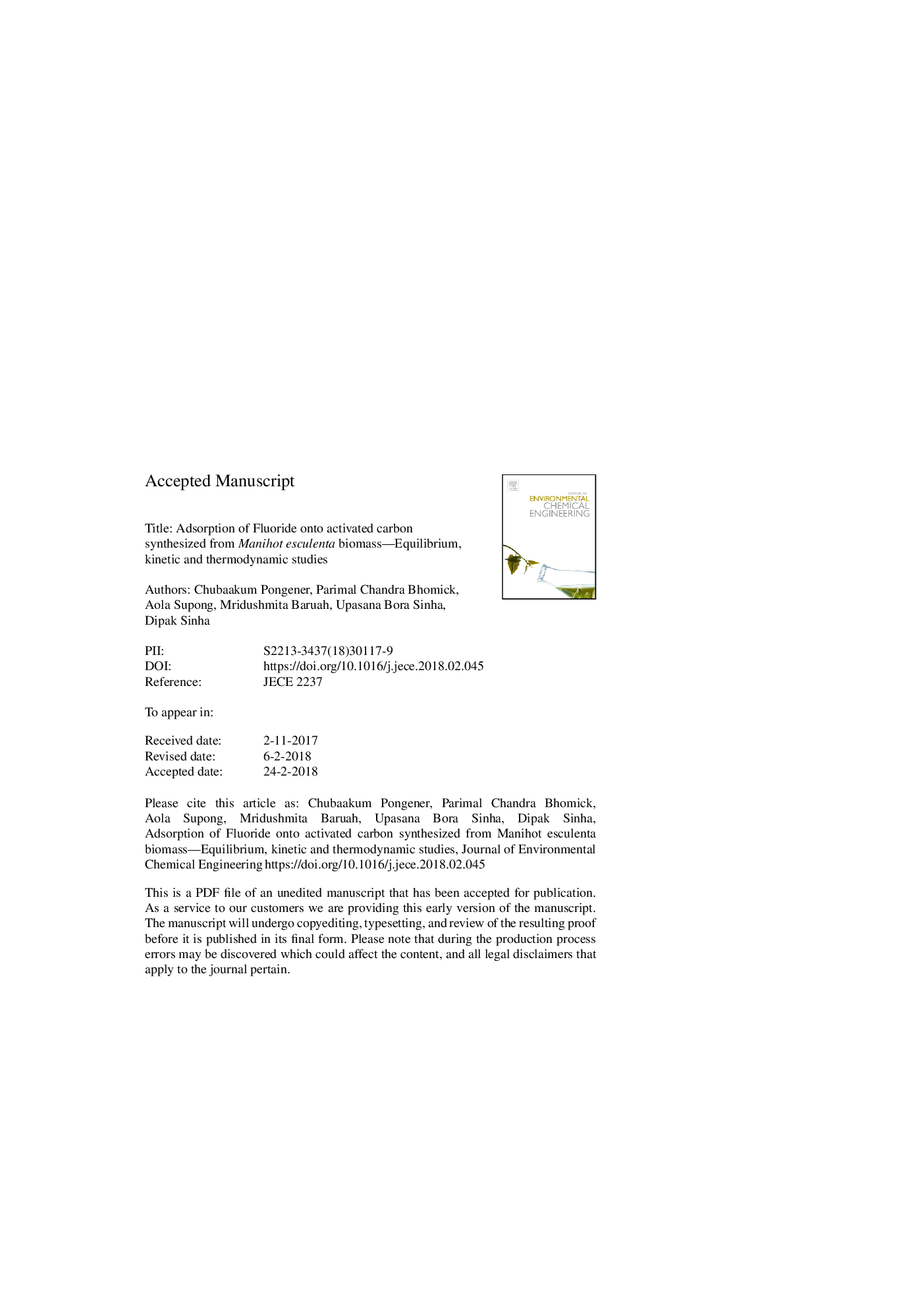| Article ID | Journal | Published Year | Pages | File Type |
|---|---|---|---|---|
| 6664037 | Journal of Environmental Chemical Engineering | 2018 | 22 Pages |
Abstract
Removal of fluoride using cheap, effective activated carbon derived from biomass of Manihot esculenta has been investigated. To understand the properties of activated carbon, characterization using SEM, BET, total pore volume, zero point charge etc. have been studied. The effect of adsorbent dose, contact time, initial concentration and pH on adsorption has been experimentally studied using batch mode of adsorption. Freundlich model of adsorption is found to be best fitted as compared to Langmuir and Temkin model. Kinetic studies indicate that adsorption follows a pseudo-second order kinetic model. Thermodynamic process on adsorption of fluoride onto activated carbon was found to be endothermic and spontaneous. Presence of co-ions on fluoride removal follows the order of CO32ââ¯>â¯SO42ââ¯>â¯NO3ââ¯ââ¯Clââ¯ââ¯Brâ. Regeneration of Manihot esculenta activated carbon with NaOH was successfully achieved with NaOH solution upto 98.7% could be regenerated.
Related Topics
Physical Sciences and Engineering
Chemical Engineering
Chemical Engineering (General)
Authors
Chubaakum Pongener, Parimal Chandra Bhomick, Aola Supong, Mridushmita Baruah, Upasana Bora Sinha, Dipak Sinha,
